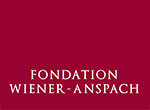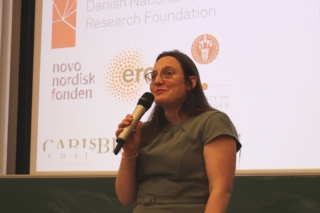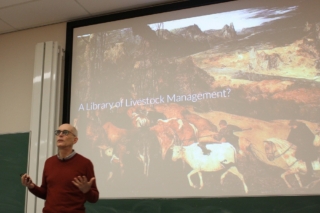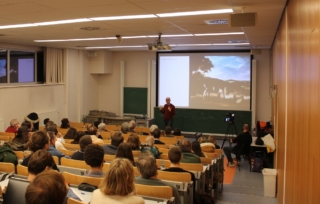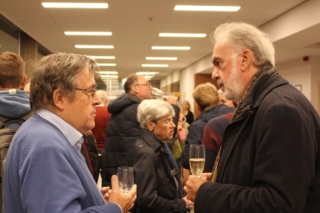
On Thursday 14 November 2024 Professor Matthew Collins (University of Cambridge) gave a Philippe WIener Lecture at the ULB, where he was welcomed by Dr Alicia Van Ham-Meert (CReA-Patrimoine) and Professor Kristin Bartik.
Matthew Collins is McDonald Professor in Palaeoproteomics at the Department of Archaeology of the University of Cambridge. Using a combination of approaches (including immunology and protein mass spectrometry), his research detects and interprets protein remnants in archaeological and fossil remains. With former PhD student Dr Mike Buckley, he developed ZooMS (Zooarchaeology by Mass Spectrometry), a way to rapidly identify bone and other collagen based materials using peptide mass fingerprinting.
Abstract
The unifying principle for biologists is the theory of evolution by descent, first articulated by Charles Darwin. According to this theory, copying errors in DNA are subject to natural selection, shaping future generations. A similar approach is employed in manuscript studies, such as in the analysis of biblical texts, where copying / translation errors—like whether Moses is depicted with horns —allow scholars to trace the dissemination of ideas across time and geography.
When writing on parchment made from animal skins, these two processes converge. The written text communicates one message, but the biological material of the parchment itself carries another—the life history of the animals whose skins were used. Through genetics, we can trace the relationships among these animals and link documents written on parchment across centuries. The proteins and lipids speak to age, health and climate. This concept underpins the emerging field of bio-codicology, which studies books as material culture, focusing on the biological origins of the animals whose skins became the medium for human ideas.
In this lecture, we will examine manuscripts from the perspective of a biologist, not as historians or conservators. We will explore how biology can offer valuable insights into manuscript studies, but we will also recognise that fully understanding the story of manuscripts and manuscript culture requires interdisciplinary collaboration. Only by working together across disciplines can we piece together a unified and comprehensive picture of these remarkable cultural artefacts.


